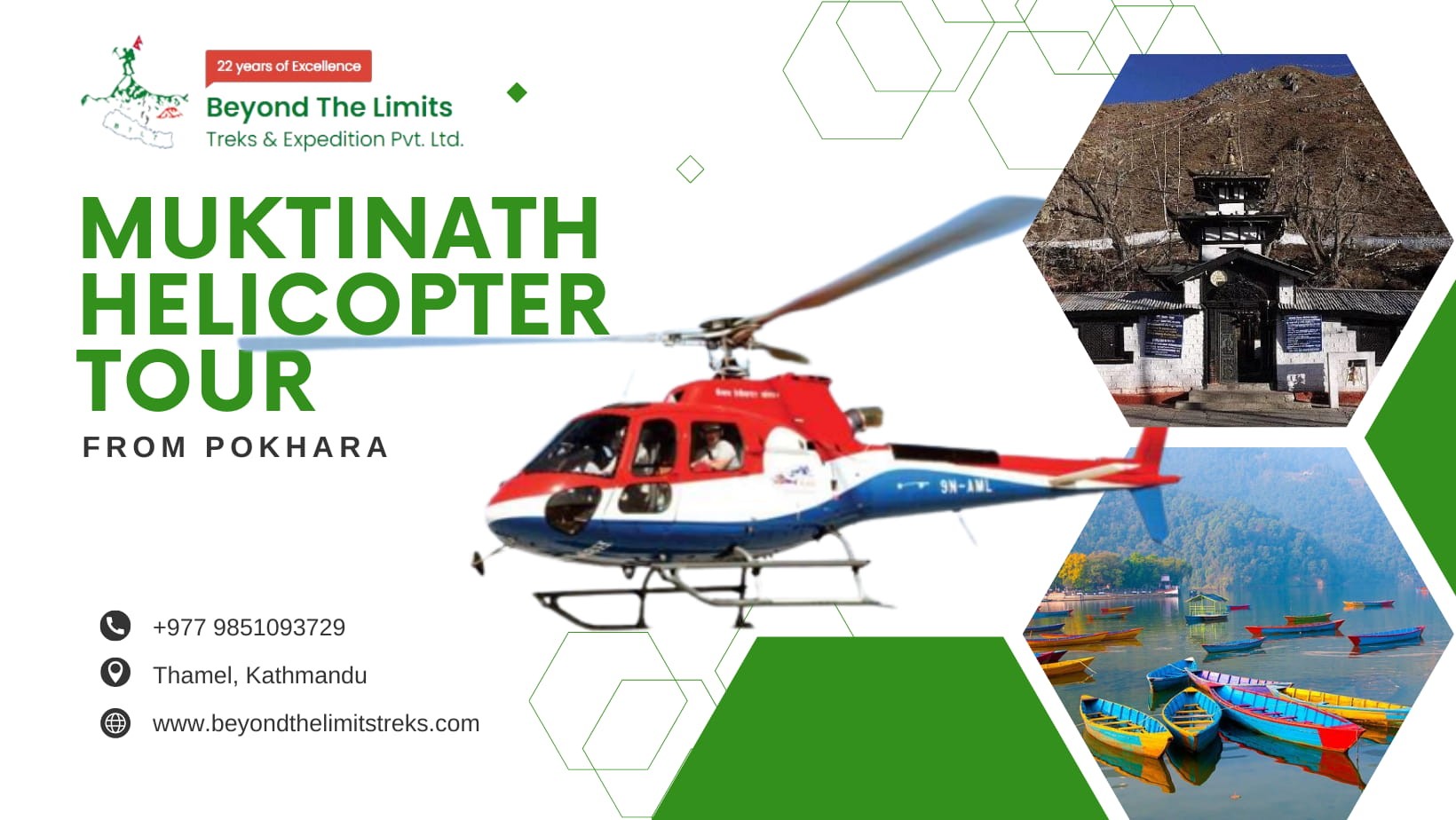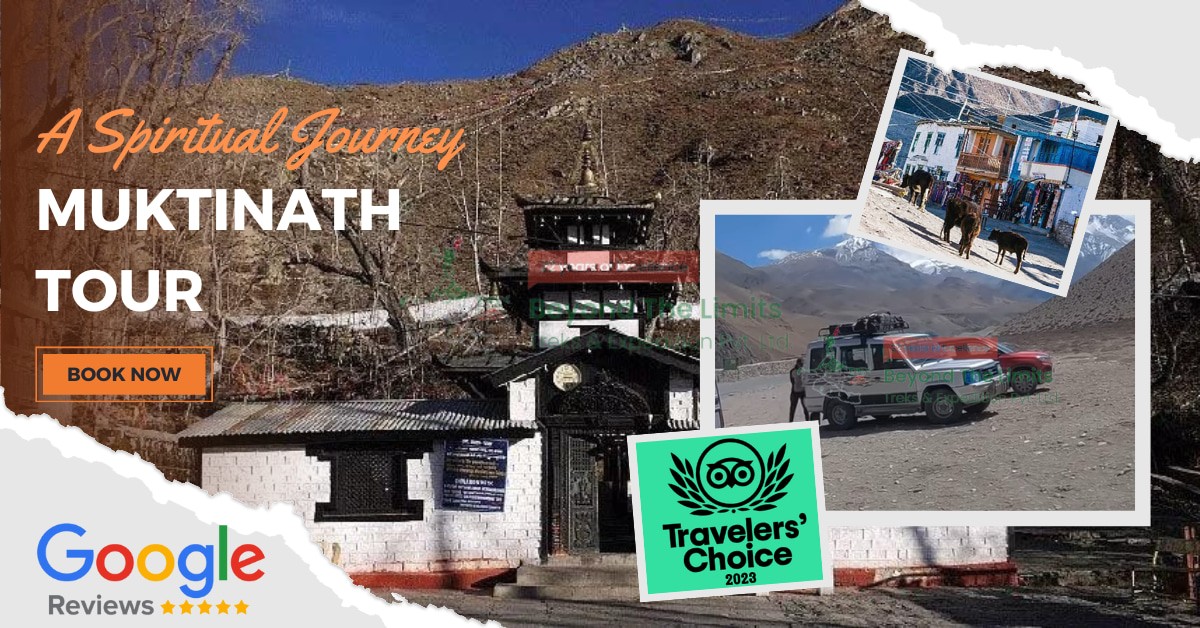Muktinath Tour Highlights:
- Witness the evening Aarati at Pashupatinath and immerse in local traditions.
- Visit the historic Manakamana Temple en route to Pokhara.
- Engage in Pokhara city sightseeing, including Phewa Lake and Gupteshwor Cave.
- Experience the rugged beauty and unique landscape during the drive to Jomsom.
- Witness the harmonious blend of Hinduism and Buddhism in the Muktinath region.
- Experience profound spiritual enlightenment at the revered Muktinath Temple.
- Enjoy panoramic views of the majestic Dhaulagiri and Annapurna mountain ranges.
- Explore the pristine beauty of Muktidhara Dhumba Lake.
- Dive into the rich cultural and spiritual tapestry of the region with local interactions.
- Enjoy the warm hospitality and local cuisine of Nepal throughout the journey.
Significance of Muktinath Tour - A Brief History:
Muktinath, a name that resonates deeply with spiritual significance, is a chapter in the ancient annals of Nepal’s rich history. Its origins are shrouded in myths and legends, passed down through generations, making it a living testament to the region’s cultural and spiritual heritage.
Historically, Muktinath temple has been a confluence of both Hinduism and Buddhism. Guru Rinpoche (Padmasambhava), the founder of Tibetan Buddhism, stopped Muktinath to meditate, on his way to Tibet. This has cemented its reputation as a revered site for Buddhists.
Moreover, Muktinath holds importance as one of the 108 Divya Desam dedicated to Lord Vishnu. It’s believed that visiting Muktinath ensures liberation or "Moksha," freeing the soul from the cycle of birth and rebirth.
Muktinath Tour Significance:
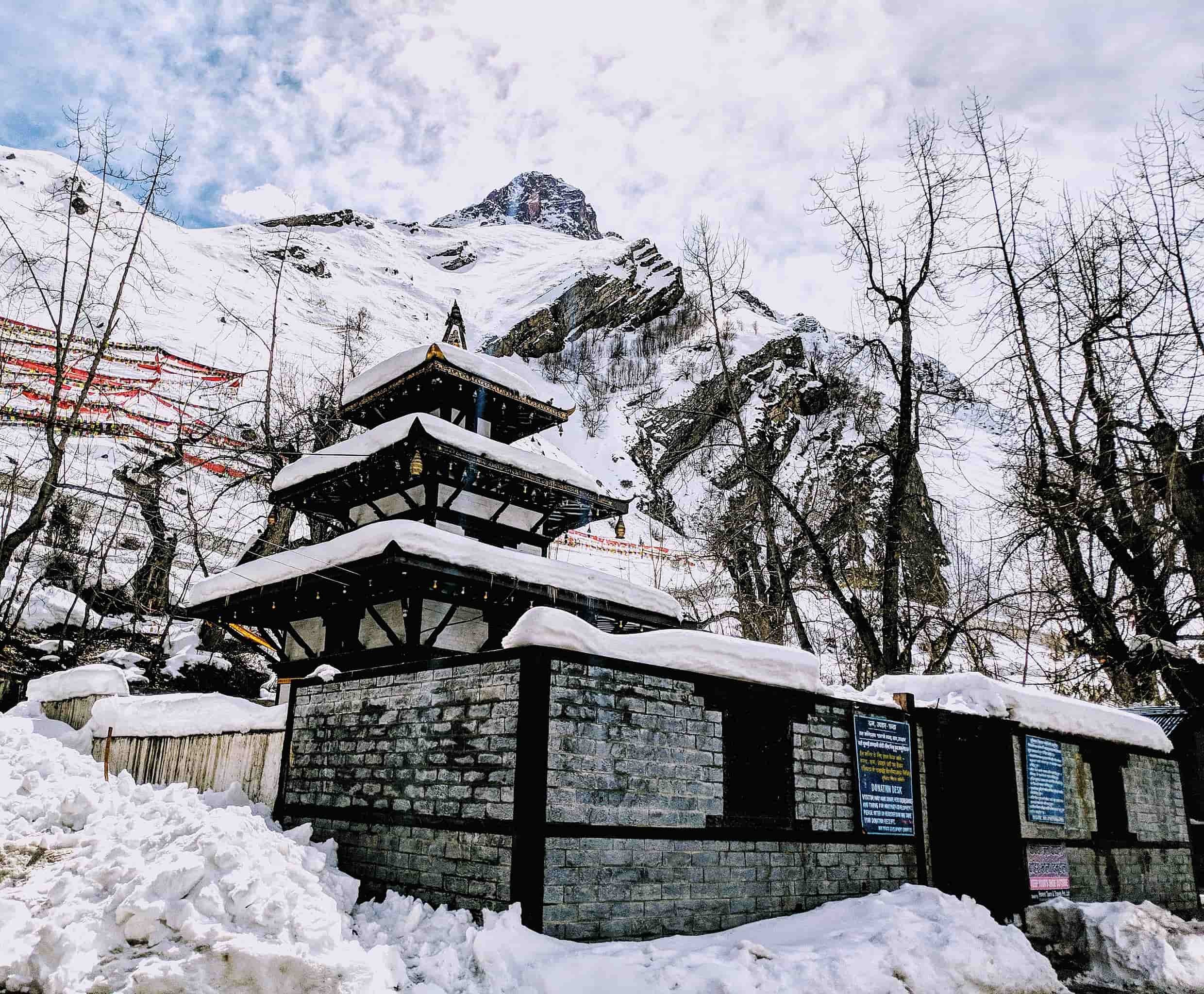
Ancient scriptures and texts reference Muktinath as a sacred space, drawing pilgrims from far and wide. The temple’s name itself, “Muktinath,” translates to “Lord of Salvation,” hinting at its profound spiritual significance a Muktinath tour.
✔ Scared Waters: The temple complex houses 108 water spouts, intricately carved in the shape of cows’ heads. Pilgrims believe that bathing in these waters purifies the soul and washes away sins.
✔ Eternal Flame: Inside the Jwala Mai Temple, a part of the Muktinath complex, an eternal flame burns, fueled by natural gas. This flame, which burns atop a spring, is considered a rare combination of earth, water, and fire, elements that hold deep spiritual significance in Hinduism.
✔ Symbol of Unity: Muktinath stands as a testament to the harmony between Hinduism and Buddhism. Both religions hold the site in high regard, with the temple housing both Hindu priests and Buddhist monks.
✔ Salvation and Liberation: As the “Lord of Salvation,” Muktinath promises Moksha to its devotees, a release from the cycle of life and death, making it a sought-after pilgrimage for those seeking spiritual liberation.
✔ Cultural Epicenter: Over the years, the Muktinath temple tour has emerged as a cultural epicenter, with festivals, rituals, and ceremonies celebrated with fervor. The annual Muktinath festival sees devotees from Nepal, India, and other parts of the world converge to celebrate and seek blessings.
6 Best Things About Muktinath:
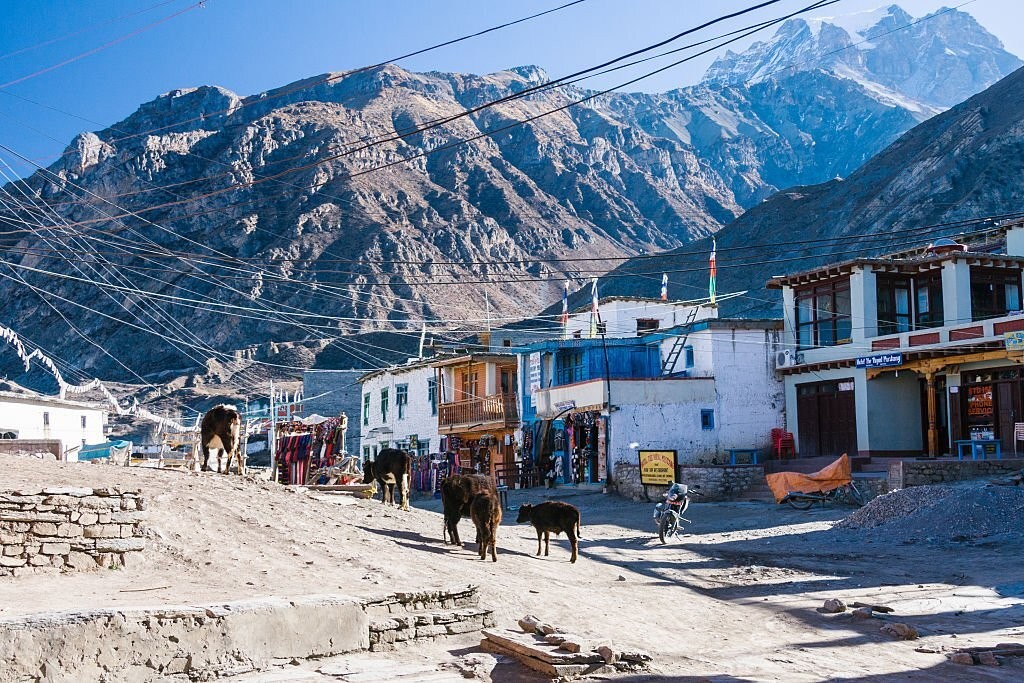
Muktinath, with its ethereal beauty and spiritual aura, offers a myriad of experiences that leave an indelible mark on the hearts of those who visit. While its spiritual significance is undoubtedly its primary allure, Muktinath is a treasure trove of experiences, each more enriching than the last. From breathtaking natural wonders to rich cultural experiences, the Muktinath tour in Nepal promises a journey of discovery and enlightenment.
✔ Panoramic Himalayan Views: Muktinath offers breathtaking views of the Himalayas. Nestled at a high altitude, it provides a vantage point to witness the majestic Himalayas, especially the stunning Dhaulagiri and Annapurna ranges.
✔ Spiritual Ambiance: The very air in Muktinath hums with spirituality. Its serene environment, coupled with the chants, prayers, and the sound of bells, creates an ambiance that calms the mind and soothes the soul.
✔ Rich Cultural Tapestry: With both Hindus and Buddhists considering it sacred, Muktinath temple tour offers a unique blend of rituals, ceremonies, and festivals that provide a glimpse into Nepal's rich cultural heritage.
✔ Adventurous Tour : The Muktinath tour is as rewarding as the destination itself. It takes one through rugged terrains, lush valleys, and quaint villages, is an adventure lover’s dream come true.
✔ Historical Significance: Beyond its spiritual importance, Muktinath is also steeped in history. Ancient scriptures, legends, and local folklore make the temple a living museum, offering insights into the region’s past.
✔ Warm Local Hospitality: The people of Muktinath, with their warm smiles and unmatched hospitality, add a special touch to the Muktinath experience. Their stories, traditions, and local cuisine make the journey even more memorable.
Places to Visit in Muktinath:
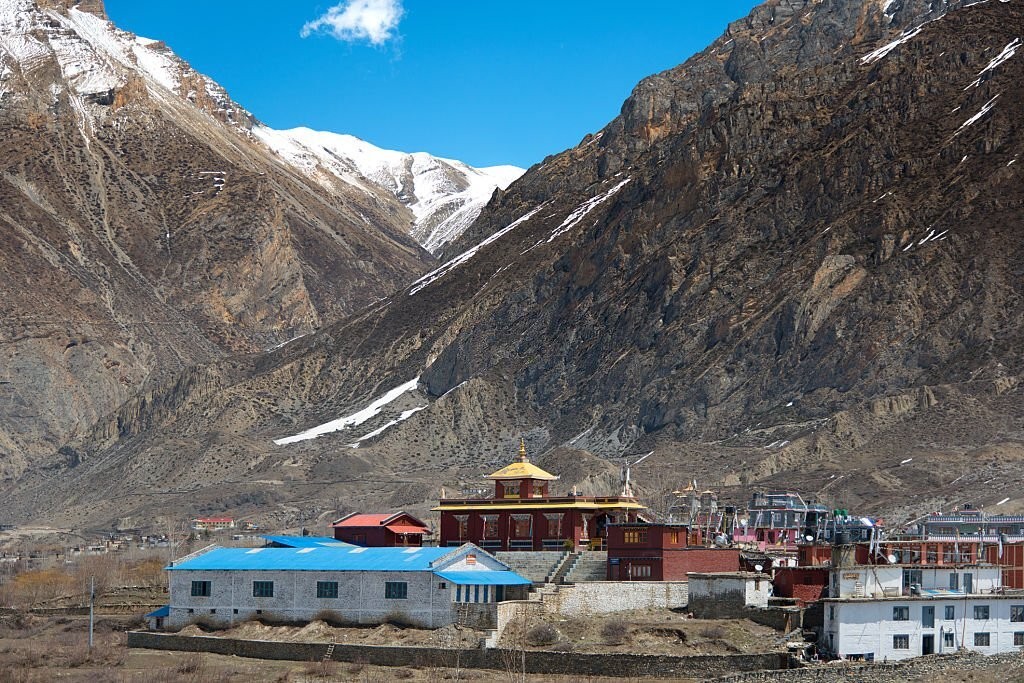
Muktinath, a gem in the Himalayas, is not just a spiritual epicenter but also a place of unparalleled beauty and cultural significance. While its spiritual aura draws pilgrims from all over, its natural beauty and rich cultural tapestry make it a haven for travelers and adventure seekers. Below are listed some must-visit places in Muktinath that encapsulate its essence.
✔ Shaligrama Mandir:
Considered one of the holiest places in Muktinath, Shaligrama Mandir is dedicated to Lord Vishnu. It’s believed that the Shaligram stones found here are the manifestations of Lord Vishnu himself. These black stones, revered by Hindus, are often taken as souvenirs by pilgrims.
✔ Muktinath Temple:
The heart of Muktinath, this sacred temple dedicated to Lord Vishnu, is a beacon for both Hindus and Buddhists. With its 108 water spouts and eternal flame, Muktinath temple is a marvel of spiritual significance and architectural grandeur.
✔ Saraswati and Laxmi Kunda:
These sacred ponds, located within the temple complex, hold immense religious importance. It’s believed that taking a dip in these waters can cleanse one’s sins. While Saraswati Kunda is dedicated to the goddess of knowledge, Laxmi Kunda is dedicated to the goddess of wealth.
✔ Swaminarayan:
A significant site for followers of the Swaminarayan sect, this place marks the meditation spot of Lord Swaminarayan. It’s said that he meditated here during his Himalayan sojourn, making it a revered spot for his devotees.
✔ Gomba Samba:
A beautiful monastery that stands as a testament to Muktinath’s Buddhist heritage. With its vibrant prayer flags and intricate architecture, Gomba Samba offers a serene space for meditation and reflection.
✔ Muktidhara Dhumba Lake:
A serene gem in the Himalayas, Muktidhara Dhumba Lake mesmerizes with its pristine waters and tranquil ambiance. Surrounded by snow-capped peaks, it’s a haven for nature lovers seeking solace.
✔ Kali Gandaki Gorge:
Renowned as one of the world’s deepest gorges, the Kali Gandaki Gorge is a testament to nature’s grandeur. Carved between the Annapurna and Dhaulagiri mountains, its breathtaking vistas and unique ecosystem captivate adventurers and geologists alike.
Best Time for Muktinath Tour:
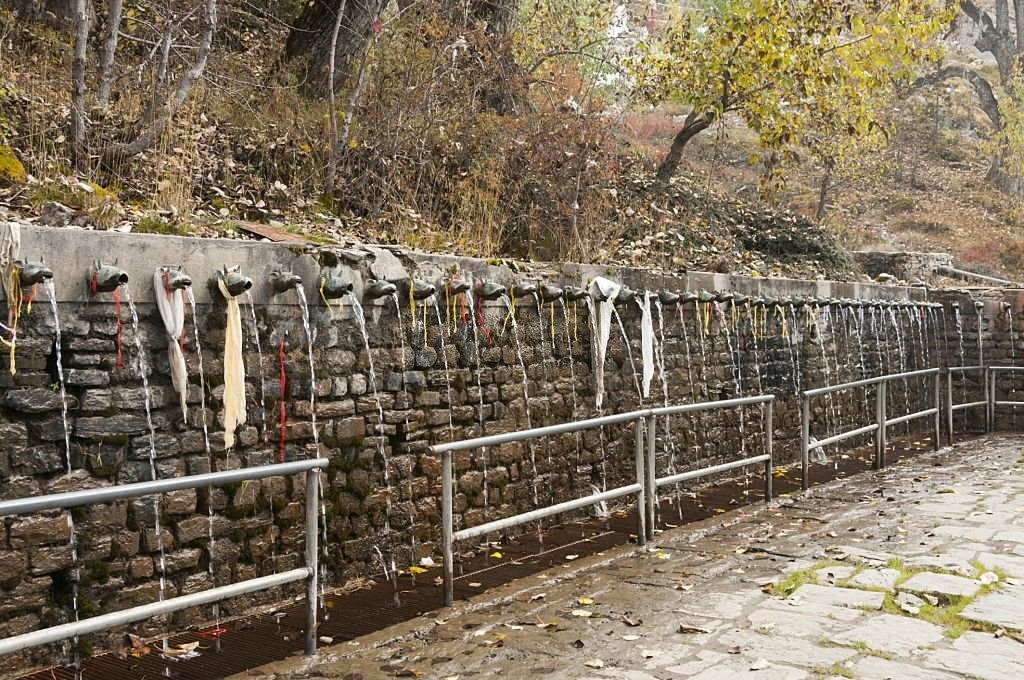
Muktinath, with its high-altitude location in the Himalayas, experiences varied weather conditions throughout the year. While Muktinath temple holds spiritual significance all year round, certain months offer a more pleasant and accessible journey. The best time for a Muktinath tour largely depends on your preferences, whether you seek clear skies, lush landscapes, or festive atmospheres.
Pre-Monsoon (March to June):
During these months, Muktinath witnesses a gradual rise in temperature. The skies are mostly clear, offering breathtaking views of the snow-capped Himalayas. The landscape starts to bloom, making it a visually delightful time for the tour.
Post-Monsoon (Late September to November):
Post-monsoon months are among the most favored for visiting Muktinath. The monsoon rains wash away the dust, resulting in crystal-clear skies. The weather is cool and pleasant, and the surroundings are lush and vibrant.
Winter (December to February):
While winter brings colder temperatures and occasional snowfall, it also offers a unique, serene beauty to Muktinath. The snow-covered temple and surroundings present a picturesque view, though accessibility can be a challenge due to snow-blocked paths.
Monsoon (July to Early September):
Monsoon is the least recommended time due to heavy rainfall, which can cause landslides in the hilly regions. However, the landscape turns incredibly green, and the rain brings out the region's raw beauty.

Permits for Muktinath Temple Tour Package:
Embarking on a Muktinath temple tour is not just about packing your bags and setting off. Given its location within the Annapurna Conservation Area, one of Nepal’s protected regions, certain permits are required to ensure the preservation of its natural and cultural heritage.
Two permits are required to take a Muktinath Temple tour package in Nepal: an Annapurna Conservation Area Project Permit and a Trekker's Information Management System (TIMS) card.
Annapurna Conservation Area Permit (ACAP): This is the primary permit required for anyone wishing to trek in the Annapurna region. It ensures the conservation of the region’s rich biodiversity and cultural heritage. ACAP is a testament to Nepal’s commitment to sustainable tourism.
Trekkers’ Information Management System (TIMS) Card: A mandatory requirement for all trekkers in Nepal, the TIMS card helps ensure the safety and security of trekkers. It aids authorities in tracking and managing the flow of trekkers and also in rescue operations during emergencies.
You can obtain these permits from Governmental registered trekking companies like Beyond the Limits Treks and Expedition. we are members of the Trekking Agencies Association of Nepal (TAAN) or the Nepal Tourism Board in Kathmandu and Pokhara. The cost of the permits may vary depending on your nationality If you are Indian Nationality Rs- and if you are from another country it costs $20 per head for a single entry.
Depending on your route and the villages you pass through, there might be additional local permits required. These permits contribute to the local economy and help in the maintenance and development of the regions you trek through.
Muktinath Tour Cost:
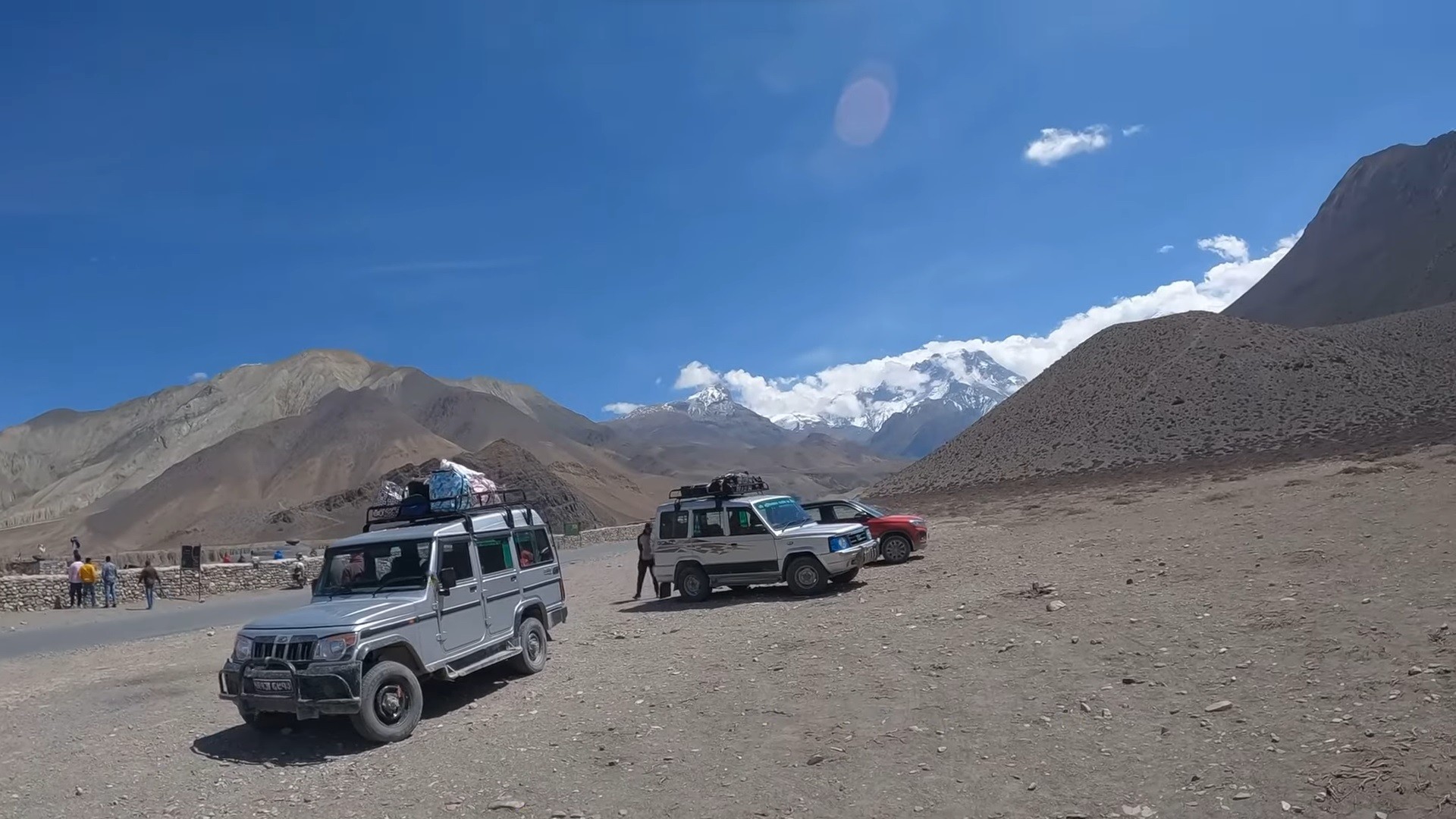
Muktinath tour in Nepal is a transformative experience, and while the spiritual rewards are immeasurable, there are tangible costs associated with the trip. The cost of the Muktinath tour can vary based on several factors, including the trip duration, accommodation type, and mode of transportation. It also varies depending on the group size of the traveler.
- For Nepalese: NRs.59000
- For Indian: INR-37000
- For Foreigners $760
- Muktinath Tour Cost by Jeep: Contact us for more info The price On Group size.
Check Out our: Car Rental Service and Prices
7 Days Muktinath Tour from Kathmandu:
Day 1: Arrival in Kathmandu (1400 metres):
Your spiritual journey begins in Kathmandu. Our representative welcomes you to the airport and transfer to your hotel. Post some relaxation, you visit Pashupatinath Temple in the evening. Witnessing the Aarati, a ritual of lights, you have is a soul-stirring experience.
Day 2: Drive from Kathmandu to Manakamana and Pokhara (822 meters):
The journey to Pokhara is as scenic as it is spiritual. En route, a stop at the Manakamana Temple believed to fulfill the wishes of its visitors, adds a divine touch to the journey.
Day 3: Drive from Pokhara to Jomsom (2800 meters):
As you ascend towards Jomsom, the landscape transforms, revealing the rugged beauty of the Himalayas. The drive is a blend of adventure and scenic beauty, setting the tone for the days to come.
Day 4: Drive from Jomsom to Muktinath (3727 meters):
The highlight of the tour, the Muktinath Temple visit, promises spiritual rejuvenation. After seeking blessings, the journey continues back to Lete, offering another chance to soak in the natural beauty.
Day 5: Drive from Lete to Pokhara (822 meters):
Pokhara, with its serene lakes and panoramic mountain views, offers a tranquil retreat. The day is dedicated to exploring the city’s gems, from the Phewa Lake to the Gupteshwor Cave.
Day 6: Drive back from Pokhara to Kathmandu (1,324 metres):
Today you drive back to Kathmandu. The drive is filled with reflections, memories, and the promise of one last adventure in the capital city.
Day 7: Departure from Kathmandu:
Today you will make your way home. Our representative will receive you from your hotel and drive you to the TIA airport for your departure flight.
Muktinath Tour with Beyond the Limits Treks:
Muktinath, with its spiritual aura, breathtaking landscapes, and rich cultural heritage, offers an experience that transcends the boundaries of a typical pilgrimage. It’s a testament to the harmonious blend of faiths that coexist in this sacred land. From the serene waters of Muktidhara Dhumba Lake to the majestic views of the Himalayan ranges, every moment in the Muktinath tour is etched in your memory forever.
Choosing the right guide for this transformative journey is crucial. Beyond The Limit Treks prides itself on curating experiences that resonate deeply with our travelers. Our Muktinath tour package is meticulously designed to ensure you not only visit the sacred sites but truly experience the essence of Muktinath. With our local expertise, warm hospitality, and commitment to providing unparalleled experiences, we invite you to embark on this spiritual journey with us.
Contact us and book your Muktinath tour today.
Frequently Asked Question on Muktinath Tour Pakcage:
1. Where is Muktinath temple?
- Muktinath Temple is in the Mustang district of Nepal, at an altitude of 3,762 meters in the Himalayas. It lies on the Annapurna Circuit, a popular trekking route.
2. What is Muktinath famous for?
- Muktinath is renowned for its spiritual significance in both Hinduism and Buddhism. It’s one of the 108 Divya Desam dedicated to Lord Vishnu. Its 108 water spouts and eternal flame are a major attraction.
3. Which is the best month to visit Muktinath?
- The best months to visit Muktinath are during the pre-monsoon (March to June) and post-monsoon (late September to November) seasons. During these months, the weather is relatively clear, providing excellent views of the Himalayas.
4. What is the entry fee for Muktinath?
- While there isn’t a specific entry fee for the Muktinath Temple itself, visitors need to obtain the Annapurna Conservation Area Permit (ACAP) and the Trekkers' Information Management System (TIMS) card, both of which come with associated fees.
5. How is the road to Muktinath?
- The road to Muktinath, especially from Jomsom, is rugged and can be challenging. While it offers scenic beauty, it’s advisable to be prepared for a bumpy ride. The road conditions can vary based on weather and recent maintenance.
6. Which God is Worshipped in Muktinath temple?
Muktinath Temple is primarily dedicated to Lord Vishnu. However, it’s a significant site for both Hindus and Buddhists. While Hindus revere it as a Vishnu temple, Buddhists consider it a place where Guru Rinpoche, the founder of Tibetan Buddhism, meditated.
Muktinath Helicopter Tour Package:
